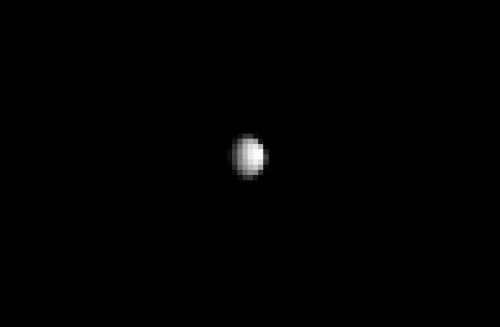
The Dawn spacecraft continues to make its way closer to a world which still hasn’t been seen close-up: the dwarf plant Ceres, the largest body in the main asteroid belt. And now, Dawn has taken its best-yet image of Ceres, although it is still 740,000 miles (1.2 million kilometers) away.
“Now, finally, we have a spacecraft on the verge of unveiling this mysterious, alien world. Soon it will reveal myriad secrets Ceres has held since the dawn of the solar system,” said Marc Rayman, chief engineer and mission director of the Dawn mission.
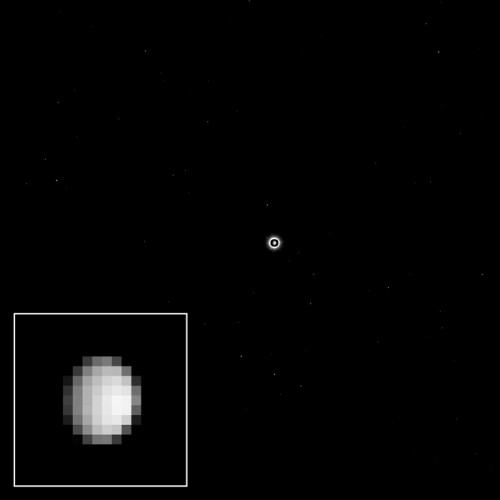
So far, the best images have come from the Hubble Space Telescope, which still don’t show a lot of detail. In the new image, taken Dec. 1, 2014, Ceres is only about nine pixels wide, so not much more than a bright dot, but as Dawn gets closer, it will begin to acquire images better than Hubble’s, until it reaches Ceres next March, and we will finally see what this dwarf planet actually looks like. Dawn will then enter orbit around Ceres for at least 14 months, making possible a detailed study of a place never yet seen by human eyes. The approach phase for Dawn begins on Dec. 26, 2014.
The new image is also useful as a calibration image for the science camera, an important step before Dawn reaches its target.
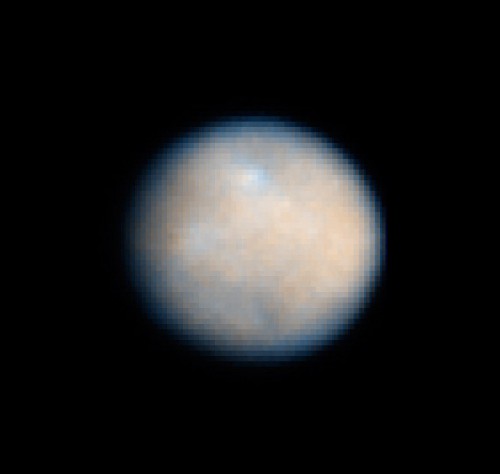
Previously, Dawn had explored Vesta, a large protoplanet about 104 million miles (168 million kilometers) away from Ceres, from 2011 to 2012. After launching in 2007, Dawn became the first spacecraft to orbit a planetary body and then leave to go visit another one.
Ceres is round, like planets, but is too small—about 590 miles (950 kilometers) in diameter—to be classified as a main planet, instead becoming a dwarf planet, like Pluto.
Ceres is thought to be similar to Jupiter’s moon Europa and Saturn’s moon Enceladus, both of which are now prime targets in the search for possible life elsewhere in the Solar System.
According to Britney Schmidt, science team liaison for the Dawn Mission:
“I think of Ceres actually as a game changer in the Solar System,” Schmidt said. “Ceres is arguably the only one of its kind.”
Like Europa and Enceladus, Ceres may have an underground ocean of liquid water.
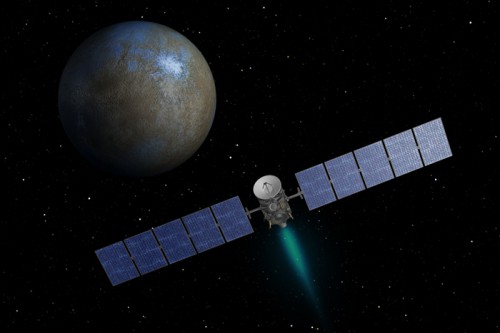
“Underneath this dusty, dirty, clay-type surface, we think that Ceres might be icy,” Schmidt said. “It could potentially have had an ocean at one point in its history. Ceres is like the gatekeeper to the history of water in the middle solar system.”
Ceres’ round shape also indicates it probably formed differently from other asteroids in the asteroid belt. Schmidt added, “The fact that Ceres is so round tells us that it almost certainly had to form in the early solar system.”
Ceres is also significantly closer to the Sun than Europa or Enceladus, which could allow any ice present to melt and reform.
Telescopic observations of Ceres have shown that water is bound up in the surface material.
“The spectrum is telling you that water has been involved in the creation of materials on the surface,” Schmidt said.
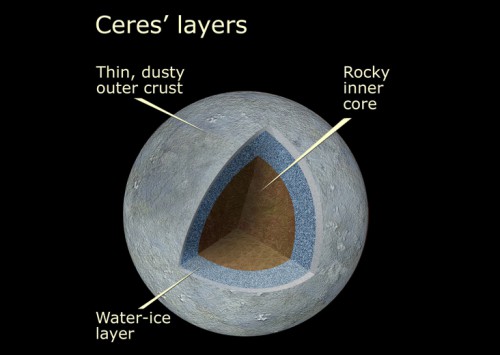
There is also evidence for carbonates on the surface. If there is still any liquid water inside Ceres today, that could make it another interesting target in terms of astrobiology. According to Julie Castillo-Rogez, a planetary scientist from JPL:
“The chemistry, thermal activity, the heat source, and the prospect for convection within the ice shell are the key ones that make us think that Ceres could have been habitable at least at some point in its history.”
See also this excellent overview of Ceres at Astrobiology Magazine.
There is a good case to be made for exploring Ceres further. As Schmidt notes:
“It’s not a difficult environment to investigate. As we think about the future of landed missions for people and rovers, why not go to Ceres?”
The Dawn mission to Vesta and Ceres is managed by NASA’s Jet Propulsion Laboratory, a division of the California Institute of Technology in Pasadena, for NASA’s Science Mission Directorate, Washington D.C. UCLA is responsible for overall Dawn mission science. The Dawn framing cameras were developed and built under the leadership of the Max Planck Institute for Solar System Research, Gottingen, Germany, with significant contributions by German Aerospace Center (DLR), Institute of Planetary Research, Berlin, and in coordination with the Institute of Computer and Communication Network Engineering, Braunschweig. The Framing Camera project is funded by the Max Planck Society, DLR, and NASA/JPL.
Want to keep up-to-date with all things space? Be sure to “Like” AmericaSpace on Facebook and follow us on Twitter: @AmericaSpace




The thing that excites me is all this exploration is being done. The sad part is, I’m too old to be a part of it. Still I am delighted with what is happening.
Anyone,
Is there a chance that after this “flyby” that Pluto may be changed back to a full fledged planet rather than a Dwarf Planet or whatever it presently is designated?
Go to Ceres with a lander? Absolutely! Also reclassifie Pluto as a planet.